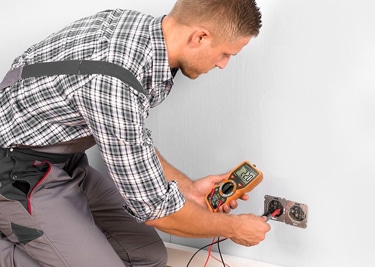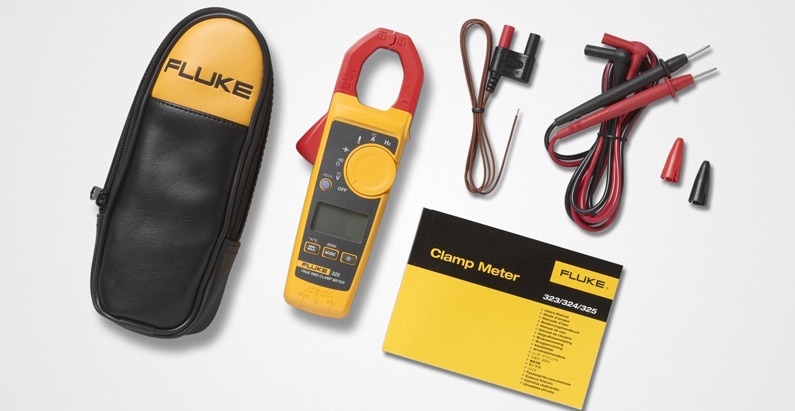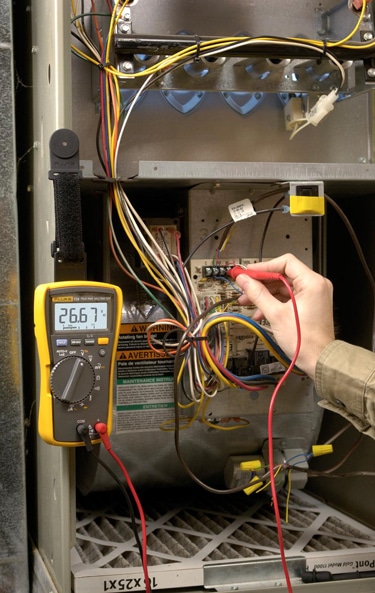Unfortunately, the digital multimeters (DMMs) can blow up and cause not only equipment damage but also serious personal injuries. And when the electrical powers become a hazard, a man’s knowledge becomes his most important tool for the survival. Even though these handy gadgets come with a plethora of safety features, one should still know the limitations of these features and what things to avoid when using his measuring device.
We’re here to help you out with that – in this article, we’ll take a look at the most typical misuses of DMMs and some important safety considerations. Read on!

Misuses of Multimeters
One of the most potentially dangerous misuses would be measuring voltage while the model’s test probes are in the current terminals, which is something most individuals do by accident. Even though the DMMs fuse offers protection, one shouldn’t forget that this protection isn’t absolute.
An important thing to consider is the design of the current terminals. These make measurements in the LE (low-energy) circuits by opening the circuit and implanting the meter in series.
The ammeter function of a digital multimeter demands low input impedance (with the typical values being between 0.1 and 10 ohms). Otherwise, the gadget might reduce the current in the circuit one is attempting to measure. The circuit’s low impedance makes it very vulnerable. In reality, the DMM acts as a branch circuit that’s in the palm of the user’s hand, which is precisely why it requires protection by HE (high-energy) fuses.
In case these fuses blow up, it is of essential importance to replace them only with those specified by the company that manufactured the DMM. Furthermore, using the device in a wrong power category can easily cause the power to surge across the destroyed fuse.
Another very common misuse typically happens when people measure resistance. The thing that occurs here is that the individual makes contact with a circuit that he thought was dead, but it’s actually live.
Fortunately, most modern DMMs come with excellent overload protection and can recover automatically. The manufacturers of these multimeters usually get this kind of protection by implanting a thermistor in the “ohms” circuit. The purpose of this component is to rapidly increase the resistance along the heat from an overload current.
This kind of overload protection is very effective, which is precisely why so many people take it for granted. However, just like car airbags, it does not give you permission to act recklessly.

The Overvoltage Transients
One thing that has nothing to do with misuse is the frequently misunderstood potential danger that comes from the overvoltage transients.
As you already know, the voltage inputs come with high-input impedance, and the user measures voltage in parallel. The higher the parallel resistance is, the less the current is. One would think that there’s nothing to be concerned about with such high-input impedance, and he would be wrong. The transient overvoltages, occurring on the power circuits, are the primary cause for worrying.
They are unavoidable and most of them don’t create any damage, but it’s well-known that a combination of high current and high-voltage spikes can be hazardous. Where do these spikes come from? They are caused by events such as motor switching or lightning strikes and they can be severe enough to effortlessly cross the input circuitry inside your gadget, creating a short circuit.
In the worst-case scenario, the multimeter will arc inside and the user will hear something that resembles a gunshot. There will be loads of amps of dangerous current running through the test probes, creating an arc blast and a fireball of tremendously hot temperature.
In case the DMM opens the circuit fast enough, this won’t happen, but there is no 100% guarantee that you’ll avoid getting injured by an overvoltage transient. That is precisely why so many companies put a lot of effort to protect their measuring devices from the transients.

IEC 61010 and Overvoltage Installation Categories
How can one know if his multimeter has the right kind of protection against these transients? Understanding the implications of IEC 61010 is a pretty good starting point. It’s a universal standard for low-voltage test devices that describes four overvoltage installation categories.
The higher the number of the category is, the bigger the danger presented by the transients is. The categories don’t depend as much on the voltage level, but more on the fault current that’s available in the distribution system. There are voltage ratings in each category, and all of them apply to both DC and AC voltages.
Rating a DMM by both voltage and category can be quite confusing, so let’s try to make things easier. If you often work with power circuits, the category you’ll have to focus on is CAT-III. Choose only models of this category and of its associated voltage rating (for example, CAT III-1000V). The markings for the category and voltage should be somewhere on the multimeter’s facade, close to the input terminals.
What CAT Rating Do I Need?
As we said, CAT-III is an excellent starting point, and an absolute necessity if you work on high-voltage lighting circuits, variable speed drives, three-phase motors, motor controls, etc. These circuits sport enough energy to cause fireballs that we previously mentioned. Using a CAT-II rated device in a CAT-III environment is not something you want to do if you want to be safe.
At the moment, IEC (International Electrotechnical Commission) isn’t clearly defining CAT-IV specifications (with the exception of the current clamps) and that means that CAT-III is the highest relevant standard. The current clamps that can measure both voltage and current bear the marking of CAT-III, even though their current-clamp portions successfully meet the CAT-IV standard.
Even though it can’t give you a 100% guarantee that your leads are safe, a visual inspection can undoubtedly reveal faults that lead to severe injuries.
The post Things You Should Never Use Your Multimeter On appeared first on Tool Nerds.
from Tool Nerds https://ift.tt/2KYTw0o
via IFTTT
No comments:
Post a Comment